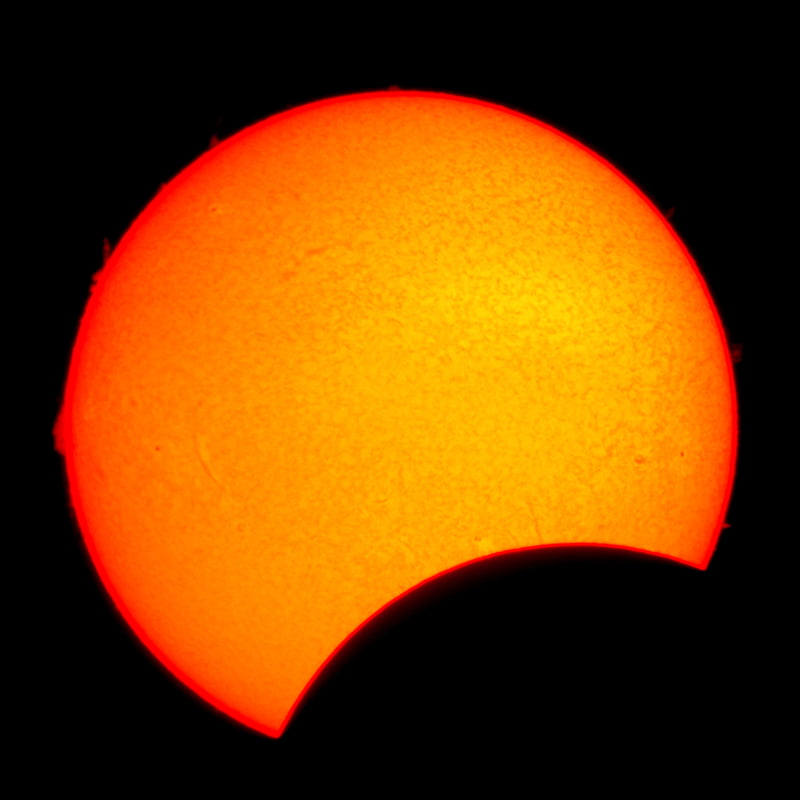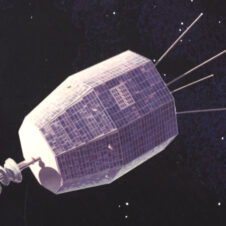ICRAR’s guerrilla astronomers brought their specially equipped telescopes down to Forrest Place and spent the afternoon showing passersby the eclipse and talking about astronomy. Hundreds of interested people stopped by to witness the astronomical event, most looking through a telescope for the first time.

About halfway through the partial eclipse in Perth, taken from Forrest Place through a special Coronado solar telescope by Mark Davies from Gingin Observatory.
A partial solar eclipse occurs when the Moon transits between the Earth and the Sun but does not cover the entire surface of the Sun. When viewed safely through special eclipse glasses or a solar telescope, partial solar eclipses appear as though a bite has been taken out of the disc of the Sun.
An annular eclipse happens when the Moon is a little further away from Earth in its orbit, which means it appears to be slightly smaller than the Sun, which causes a ‘ring of fire’ effect if you observe the eclipse from the right place on Earth. The only place to see the ring of fire for the April 29th eclipse was from above a small uninhabited patch of Antarctica. This particular eclipse was a very rare type of annular eclipse when the Moon wasn’t perfectly centred on the Sun (occurring in less than 2% of all eclipses).
Check out Perth Observatory’s images of the eclipse online.
Warning: It is never safe to observe the sun directly or through sunglasses, so if you don’t have access to eclipse glasses or a solar telescope, a good option to view an eclipse is to make a pinhole viewer. Paul Floyd’s ‘Night Sky Online’ has a template and instructions to easily build one for yourself (pdf).
More details on this particular eclipse:
The partial eclipse was visible from the majority of Australia (depending on the weather) and began just after 1pm in Perth. At the time of maximum eclipse (2:42pm) the Sun was approximately half covered by the Moon, which then started to leave the disc of the Sun until the eclipse ended just before 4pm Perth local time.

